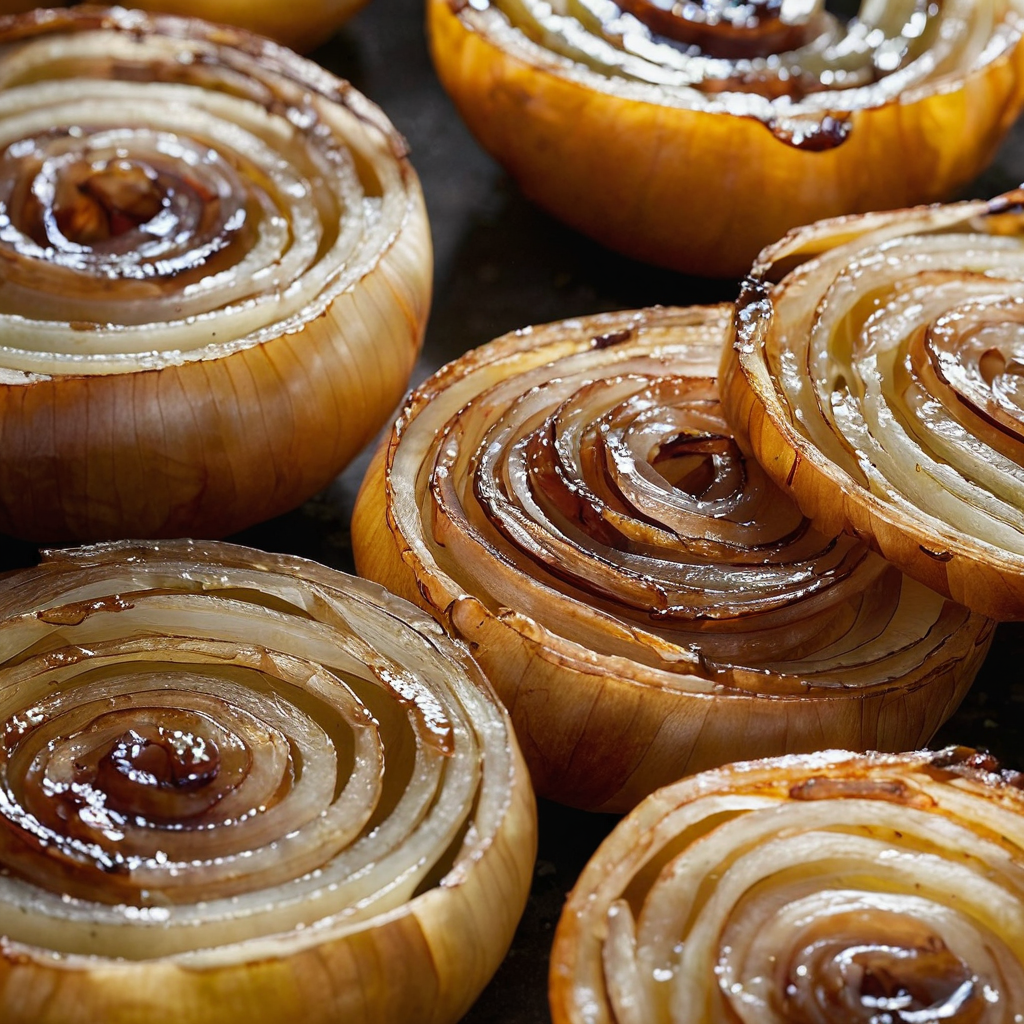How to Make Them Perfectly Every Time
If you’re a fan of adding flavor to your dishes, then you’ve probably heard of caramelized onions. These deliciously sweet and savory onions are a popular ingredient in many recipes, from soups and stews to sandwiches and burgers. But what are caramelized onions, and how do you make them?
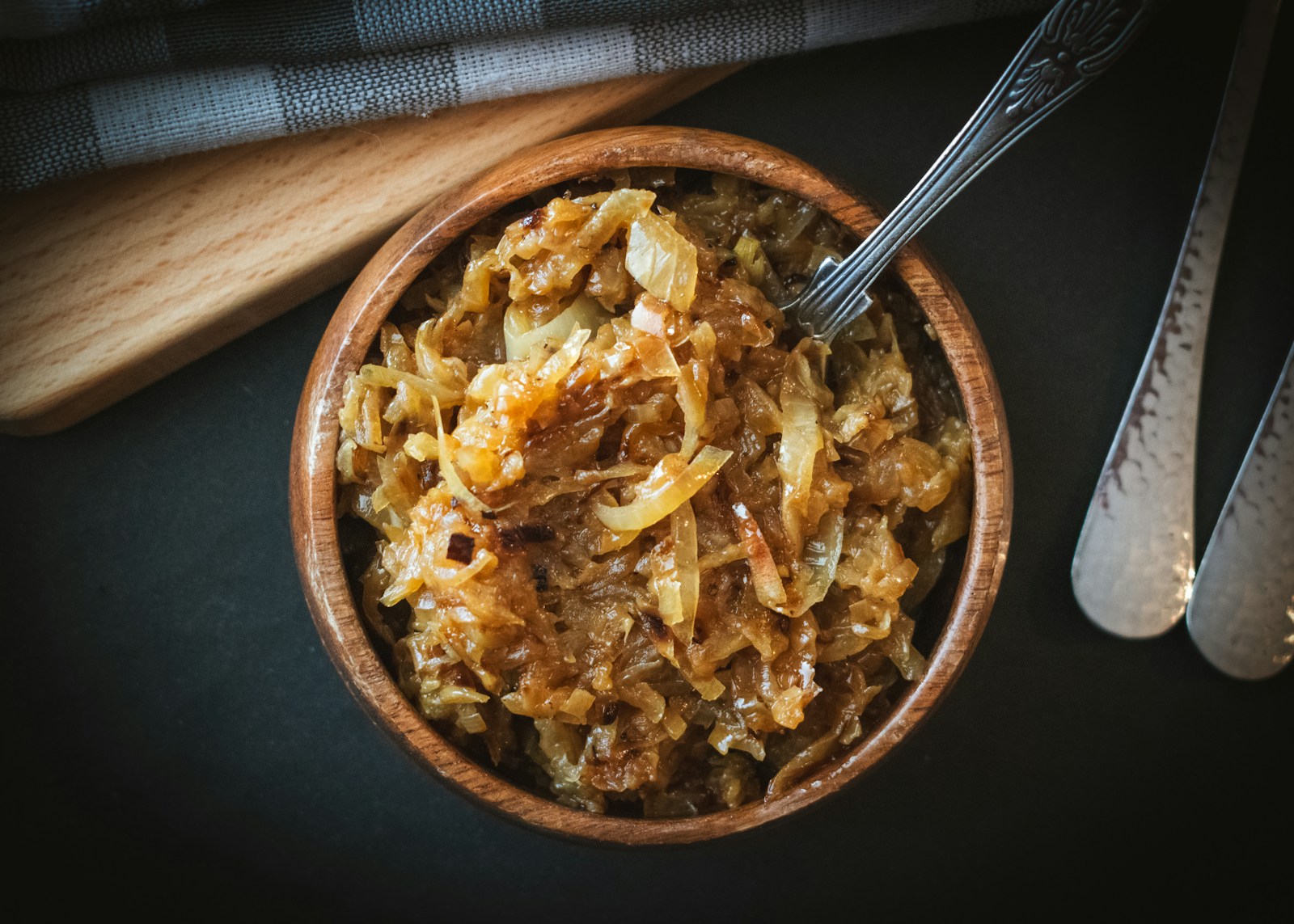
Caramelized onions are simply onions that have been cooked low and slow until they turn a deep brown color and develop a rich, sweet flavor. The process of caramelizing onions involves cooking them in a pan with some oil or butter over low heat for an extended period of time, usually around 30 minutes or more. The result is a deliciously sweet and savory onion that can add depth and complexity to any dish.
To make caramelized onions, you’ll need to start with a few basic ingredients, including onions, oil or butter, and a pinch of salt. You’ll also need a large skillet or frying pan and a bit of patience, as caramelizing onions can take some time. But the end result is well worth the effort, as caramelized onions can add a delicious flavor to a wide variety of dishes. So why not give them a try and see how they can enhance your cooking?
Choosing the Right Onions
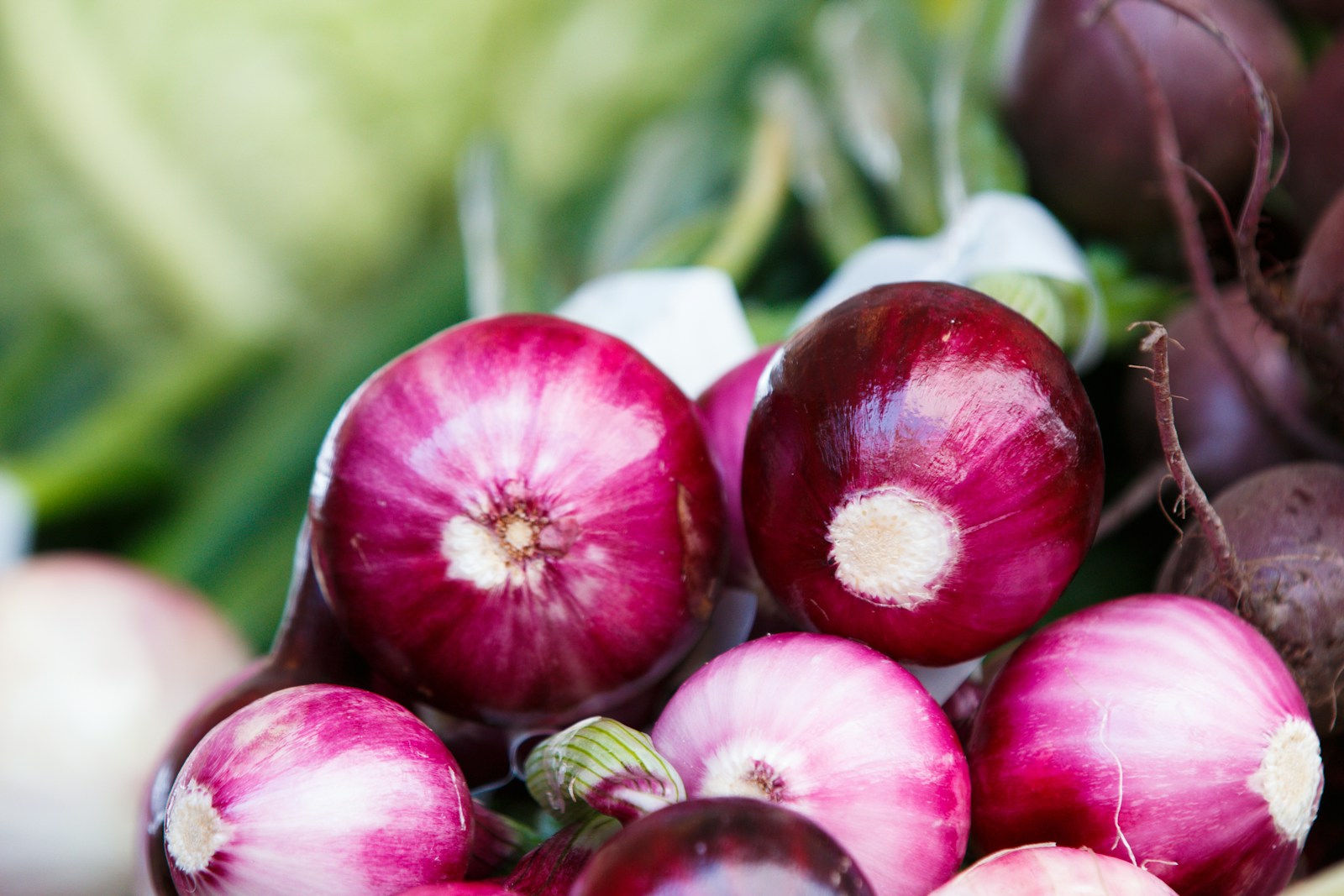
When it comes to caramelizing onions, choosing the right type of onion is critical. Some onions are better suited for caramelization than others. In this section, we’ll discuss the different types of onions and onion varieties that are best for caramelization.
Types of Onions
There are three main types of onions: yellow, red, and white. Yellow onions are the most commonly used onion for caramelization due to their high sugar content and strong flavor. Red onions have a milder flavor and are not typically used for caramelization. White onions have a sweeter flavor than yellow onions but can be used for caramelization if you prefer a milder flavor.
Onion Varieties for Caramelization
Within each type of onion, there are several varieties to choose from. For yellow onions, the best varieties for caramelization are Spanish onions, Vidalia onions, and Maui onions. Spanish onions are known for their high sugar content, making them perfect for caramelization. Vidalia onions are also a good choice due to their sweetness and low sulfur content. Maui onions are another great option for caramelization due to their high sugar content and mild flavor.
For red onions, Walla Walla onions and Tropea onions are the best varieties for caramelization. Walla Walla onions are sweet and mild, while Tropea onions have a slightly tart flavor that pairs well with sweet caramelized onions.
When it comes to white onions, the best variety for caramelization is the Sweet Spanish onion. These onions are known for their high sugar content and mild flavor, making them perfect for caramelization.
In summary, when choosing onions for caramelization, it’s important to choose onions with a high sugar content and strong flavor. Yellow onions, specifically Spanish onions, Vidalia onions, and Maui onions, are the best choice for caramelization. Red onions, specifically Walla Walla onions and Tropea onions, can also be used for caramelization. Finally, Sweet Spanish onions are the best variety of white onion for caramelization.
Preparation Essentials
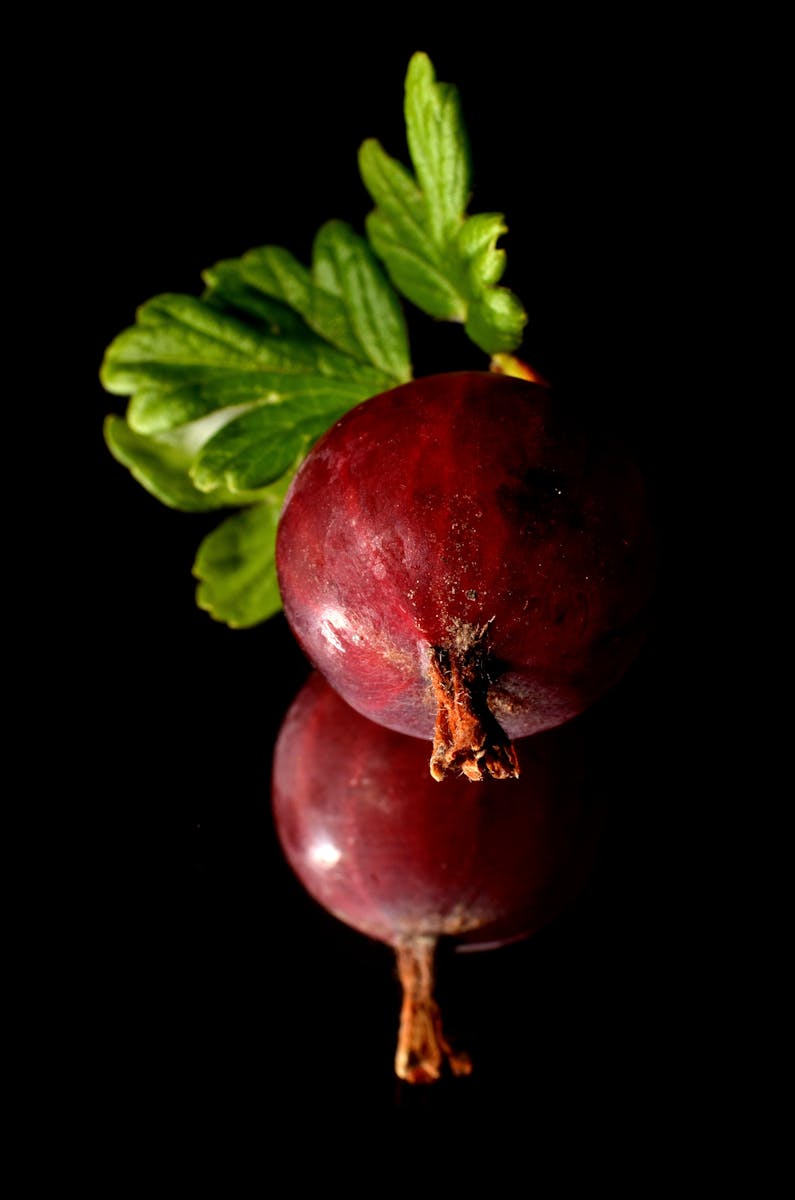
Cleaning and Cutting
Before you start caramelizing onions, make sure they are clean and dry. Rinse the onions under cold running water and pat them dry with a paper towel. Peel the outer layer of the onion, and cut off the top and bottom. Then, cut the onion in half from top to bottom and slice it thinly.
Required Kitchen Tools
To caramelize onions, you will need a few essential kitchen tools. Here is a list of the tools you will need:
- A sharp knife: You will need a sharp knife to slice the onions thinly and evenly.
- A cutting board: Use a cutting board to chop the onions.
- A heavy-bottomed skillet: A heavy-bottomed skillet will distribute heat evenly, preventing the onions from burning.
- Fat: You will need fat to cook the onions. You can use butter, oil, or a combination of both.
- Salt: Add a pinch of salt to the onions to help draw out their natural sweetness.
Once you have all the necessary tools, you are ready to start caramelizing onions. With these preparation essentials, you will be able to create perfectly caramelized onions every time.
Cooking Techniques
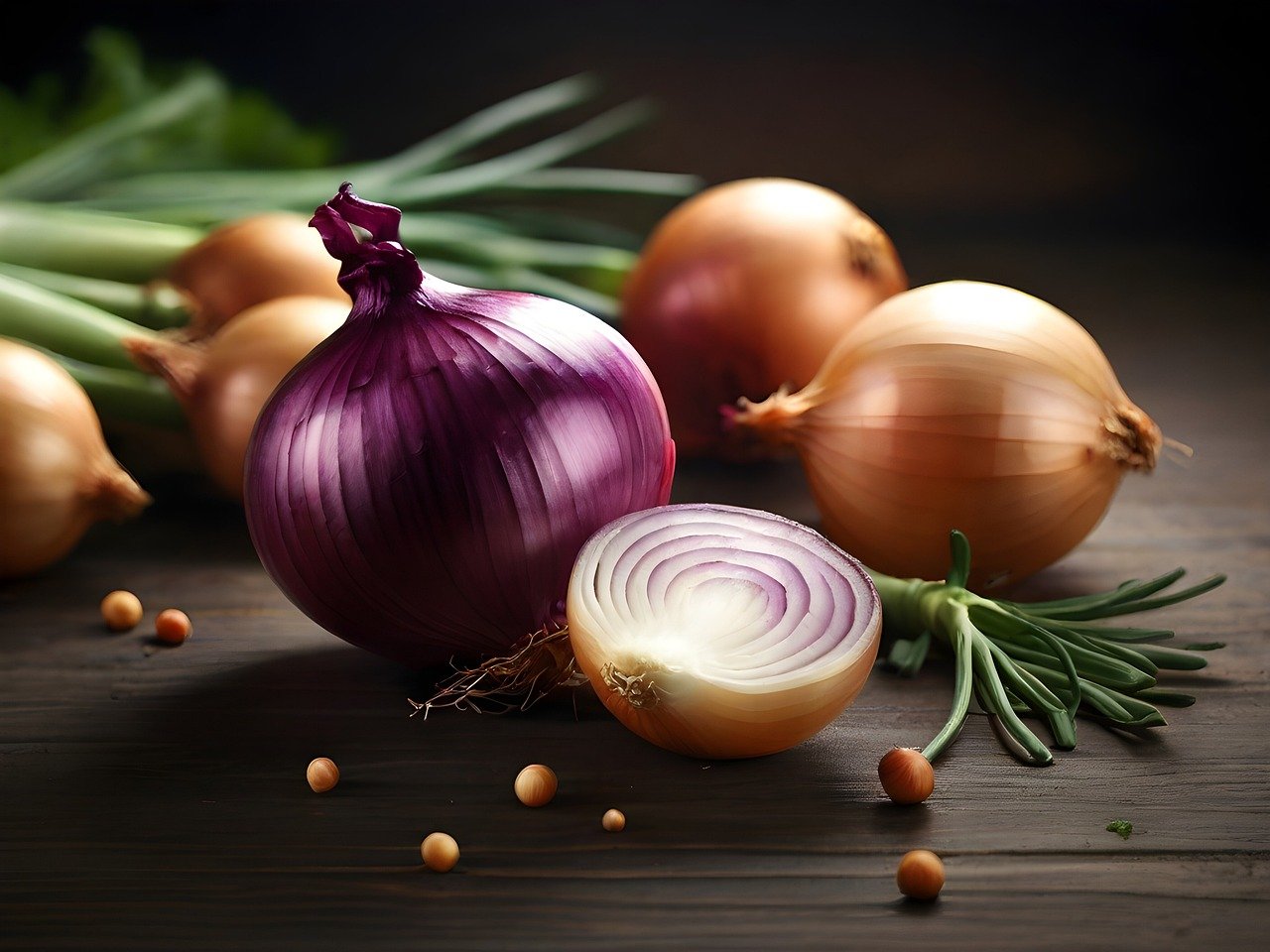
When it comes to caramelizing onions, there are two main cooking techniques you can use: the Stovetop Method and the Oven-Baked Approach. Both methods require patience and attention to detail, but they can yield delicious results.
Stovetop Method
The Stovetop Method is the most common way to caramelize onions. Start by slicing the onions thinly and evenly. In a large skillet, heat up a mixture of butter and oil over medium heat. Once the butter has melted, add the onions and stir to coat them in the fat.
Cook the onions over medium heat, stirring occasionally, until they turn translucent, about 10-15 minutes. Then, reduce the heat to low and continue cooking until the onions turn a deep golden brown, stirring occasionally, for another 30-40 minutes.
It’s important to keep a close eye on the onions during this process to prevent them from burning. You can add a pinch of salt to help draw out the moisture and speed up the process, but be careful not to add too much, or the onions may become too salty.
Oven-Baked Approach
The Oven-Baked Approach is a great alternative if you don’t have the time or patience to stand over the stove. Preheat your oven to 400°F (200°C).
Slice the onions thinly and evenly, then spread them out in a single layer on a baking sheet. Drizzle with olive oil, salt, and pepper, and toss to coat.
Bake the onions for 30-40 minutes, stirring occasionally, until they turn a deep golden brown. Keep an eye on them to prevent burning.
The Oven-Baked Approach requires less attention than the Stovetop Method, but it can take longer to achieve the same level of caramelization. However, it’s a great option if you need to multitask in the kitchen or if you’re cooking for a large group.
Whichever method you choose, the key to perfectly caramelized onions is to cook them low and slow. It may take some time, but the rich, sweet flavor is well worth the wait.
Mastering the Cooking Process
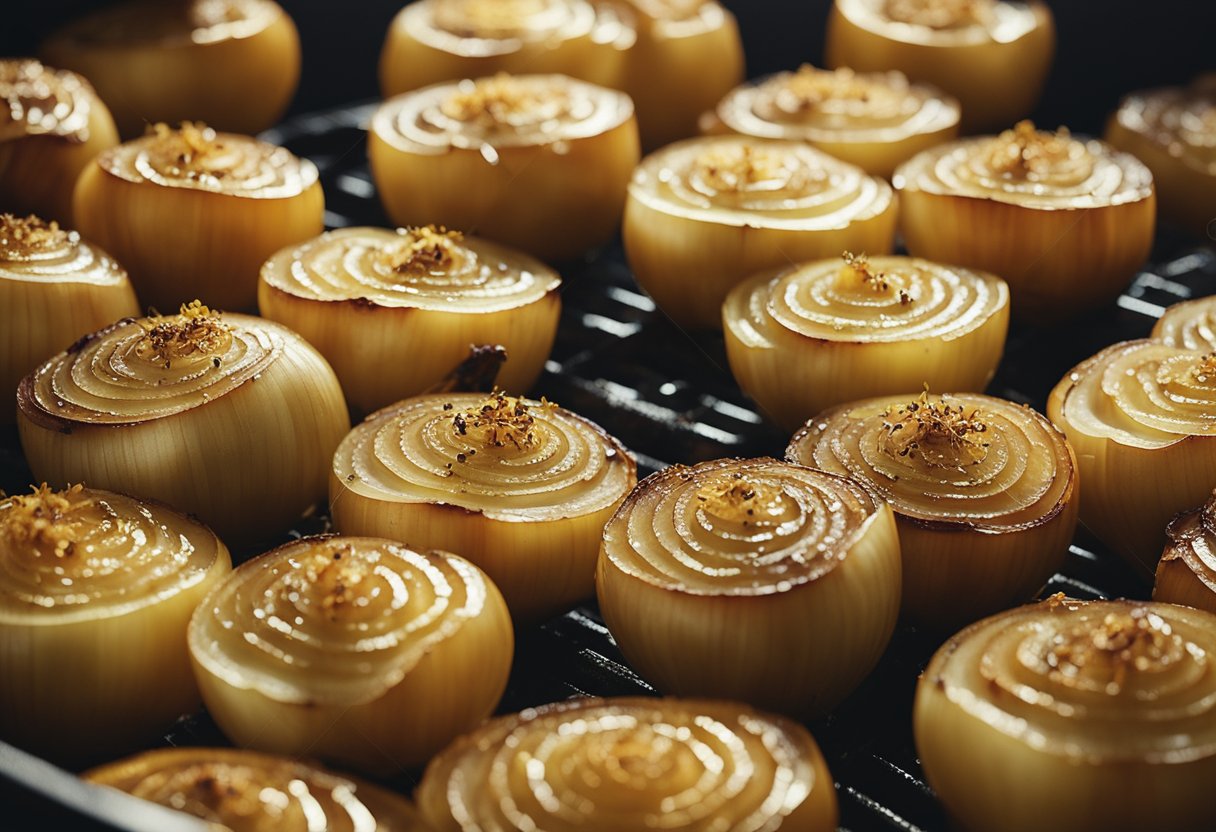
If you want to elevate your dishes to gourmet status, mastering the art of caramelizing onions is a must. This technique adds a rich, sweet, and savory flavor to a wide range of dishes, from burgers and pizzas to soups and stews. In this section, we will guide you through the step-by-step process of caramelizing onions, providing you with insider tips and tricks along the way.
Heat and Time Management
The first step to caramelizing onions is to heat a large skillet over medium heat. Add three to four tablespoons of fat to the skillet, such as butter or olive oil. A combination of the two can work well, as the butter adds rich flavor, and the oil can tolerate higher temperatures without burning.
Once the fat is heated, add the onions to the skillet and sprinkle a pinch of salt over them. Stir the onions occasionally, and let them cook for at least 30 minutes. Be patient, as this process takes time. The onions will start to caramelize after about 15-20 minutes, but it can take up to an hour to get them fully caramelized.
Stirring and Monitoring
Stirring the onions occasionally is crucial to ensure that they cook evenly and don’t burn. However, stirring too often can slow down the caramelization process, so it’s best to stir them every 5-10 minutes. If you notice that the onions are sticking to the bottom of the skillet, you can add a splash of water or broth to deglaze the pan.
As the onions start to caramelize, they will turn a deep golden brown color and become soft and tender. Taste them occasionally to check if they are sweet and caramelized enough. If not, continue cooking them until they reach your desired level of caramelization.
In summary, mastering the art of caramelizing onions requires patience, time management, and stirring. Follow the steps outlined above, and you’ll be able to create delicious caramelized onions that will take your dishes to the next level.
Flavor Enhancements
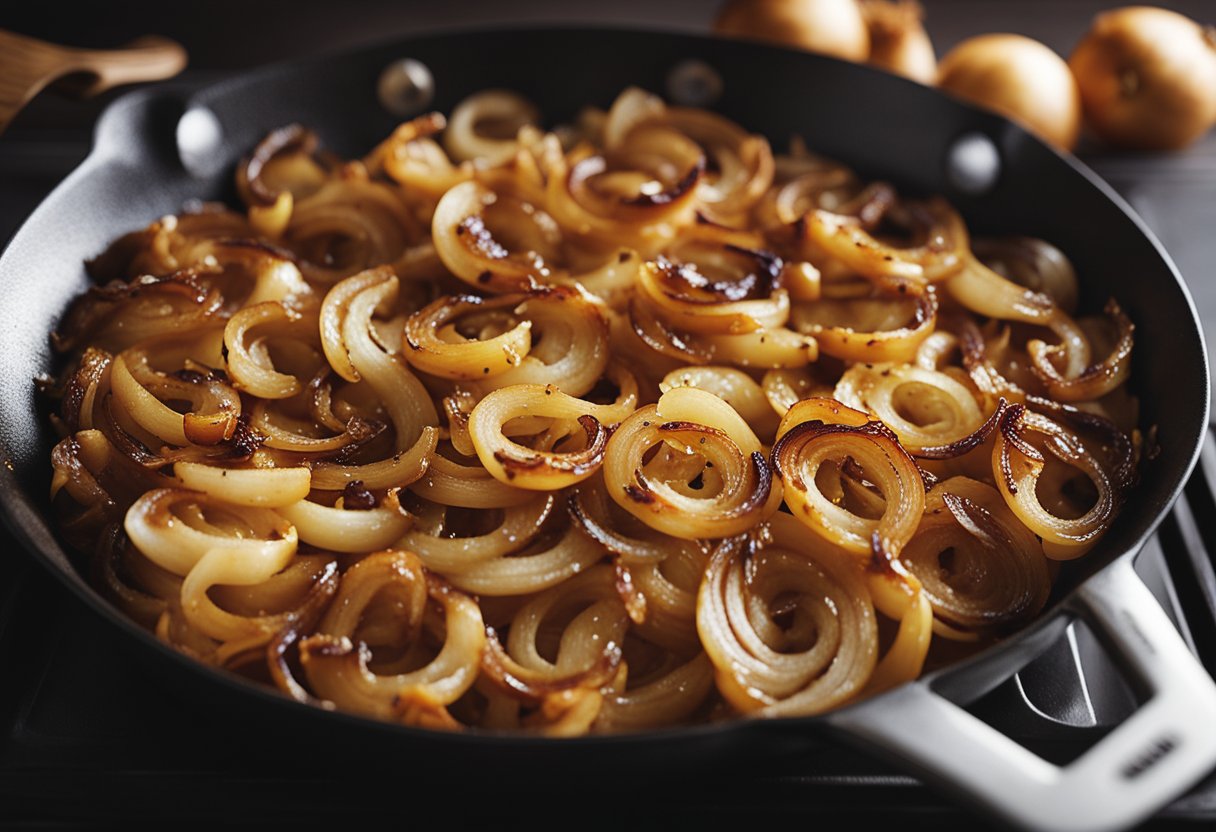
One of the many reasons caramelized onions are so popular is their incredible depth of flavor. However, you can take their taste to the next level by adding some simple flavor enhancements. In this section, we will explore two ways to enhance the flavor of caramelized onions: seasoning and spices, and deglazing the pan.
Seasoning and Spices
Caramelized onions are delicious on their own, but adding some seasoning and spices can take them to the next level. Here are some common flavorings to enhance the taste of caramelized onions:
- Salt: A pinch of salt can bring out the natural sweetness of caramelized onions.
- Pepper: Adding freshly ground black pepper can give caramelized onions a subtle kick.
- Herbs: Adding fresh or dried herbs like thyme, rosemary, or bay leaves can add depth to the flavor of caramelized onions.
- Spices: Adding spices like cumin, coriander, or paprika can give caramelized onions a unique twist.
When seasoning caramelized onions, it’s important to add the seasoning towards the end of the cooking process. This will prevent the seasoning from burning and will allow it to mix evenly with the onions.
Deglazing the Pan
Deglazing the pan is a technique that involves adding liquid to the pan after cooking the onions to scrape up the flavorful brown bits that are left behind. This technique can add an extra layer of flavor to caramelized onions. Here’s how to do it:
- After cooking the onions, remove them from the pan and set them aside.
- Add a liquid to the pan, such as wine, broth, or vinegar.
- Use a wooden spoon to scrape up the brown bits from the bottom of the pan.
- Cook the liquid until it has reduced by half.
- Add the caramelized onions back to the pan and stir to combine.
Deglazing the pan can add a complex, rich flavor to caramelized onions that is hard to achieve otherwise. It’s a simple technique that can take your caramelized onions to the next level.
In conclusion, seasoning and spices and deglazing the pan are two easy ways to enhance the flavor of caramelized onions. By adding these simple flavor enhancements, you can take your caramelized onions from delicious to unforgettable.
Nutritional Information
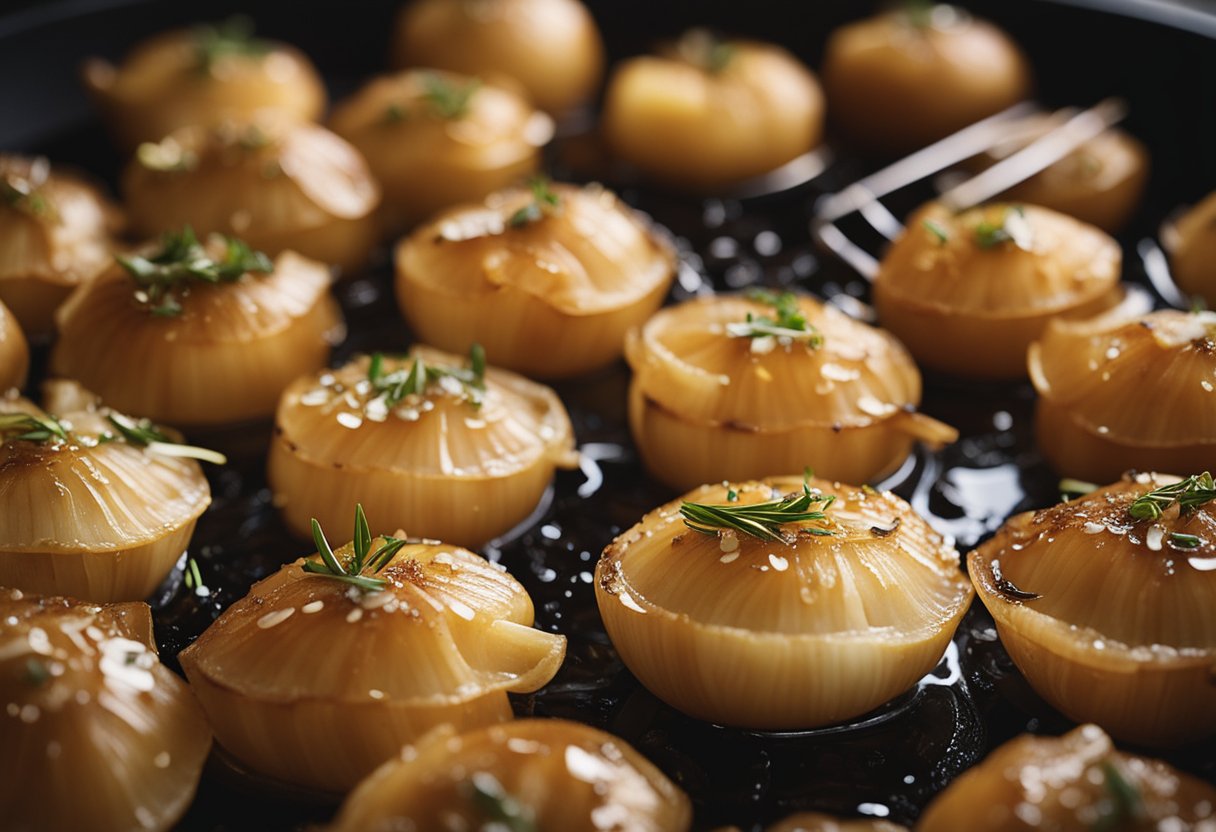
Caramelized onions are a delicious addition to many dishes, but what about their nutritional value? Let’s take a closer look at what caramelized onions have to offer.
Calories and Macronutrients
One cup of caramelized onions contains approximately 210 calories, with 2.4 grams of protein, 9.5 grams of fat, and 29 grams of carbohydrates. While caramelized onions are not particularly high in protein, they are a good source of complex carbohydrates, which provide sustained energy.
Vitamins and Minerals
Caramelized onions are a good source of vitamin C, providing approximately 16% of the recommended daily intake per cup. They also contain small amounts of other vitamins, including vitamins A, K, and B6. In terms of minerals, caramelized onions are a good source of potassium, providing approximately 10% of the recommended daily intake per cup. They also contain small amounts of calcium, iron, and magnesium.
Antioxidants and Other Compounds
Caramelized onions contain a number of antioxidants and other beneficial compounds, including quercetin and sulfur compounds. These compounds have been linked to a number of health benefits, including reduced inflammation and improved heart health.
While caramelized onions are not a particularly rich source of any one nutrient, they do offer a range of vitamins, minerals, and other beneficial compounds. Plus, their delicious flavor makes them a great addition to many dishes.
Storage and Preservation
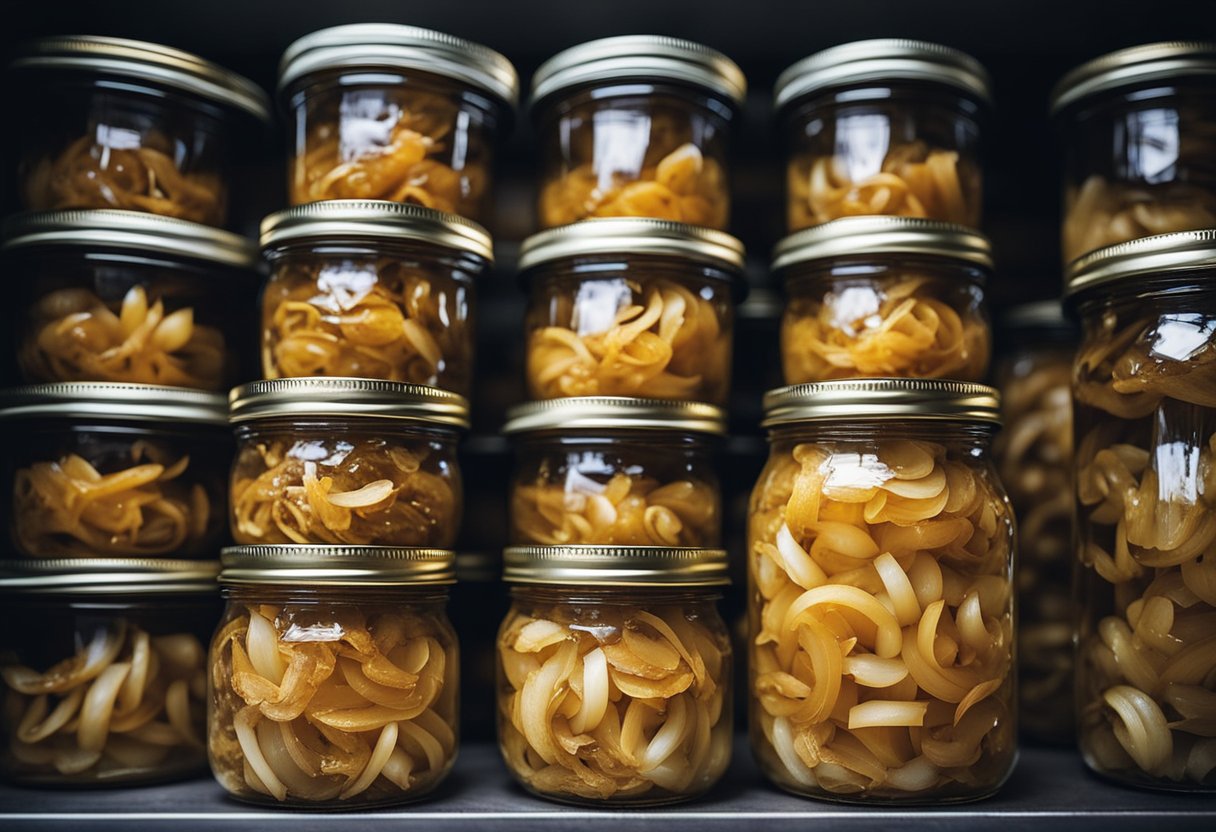
When it comes to storing caramelized onions, it is essential to follow the right procedures to ensure they remain fresh and flavorful. Here are some tips on how to store and preserve caramelized onions for both short-term and long-term use.
Short-Term Storage
If you plan on using caramelized onions within a few days, you can store them in an airtight container in the refrigerator. Make sure to let the onions cool to room temperature before storing them. You can keep them in the fridge for up to five to seven days. To prevent the onions from drying out, you can add a bit of olive oil or butter before storing them.
Long-Term Freezing
If you have leftover caramelized onions or want to prepare them ahead of time, you can freeze them for later use. The best way to freeze caramelized onions is to portion them out and freeze them in an ice cube tray. Once frozen, transfer the cubes to a freezer-safe zip-top bag and store them in the freezer. Caramelized onions can last up to six months in the freezer.
| Short-Term Storage | Long-Term Freezing |
|---|---|
| Store in an airtight container in the refrigerator | Portion out and freeze in an ice cube tray |
| Let onions cool to room temperature before storing | Transfer cubes to a freezer-safe zip-top bag |
| Add a bit of olive oil or butter to prevent drying out | Store in the freezer for up to six months |
By following these simple storage and preservation tips, you can enjoy the delicious taste of caramelized onions in your dishes whenever you want.
Creative Uses in Recipes
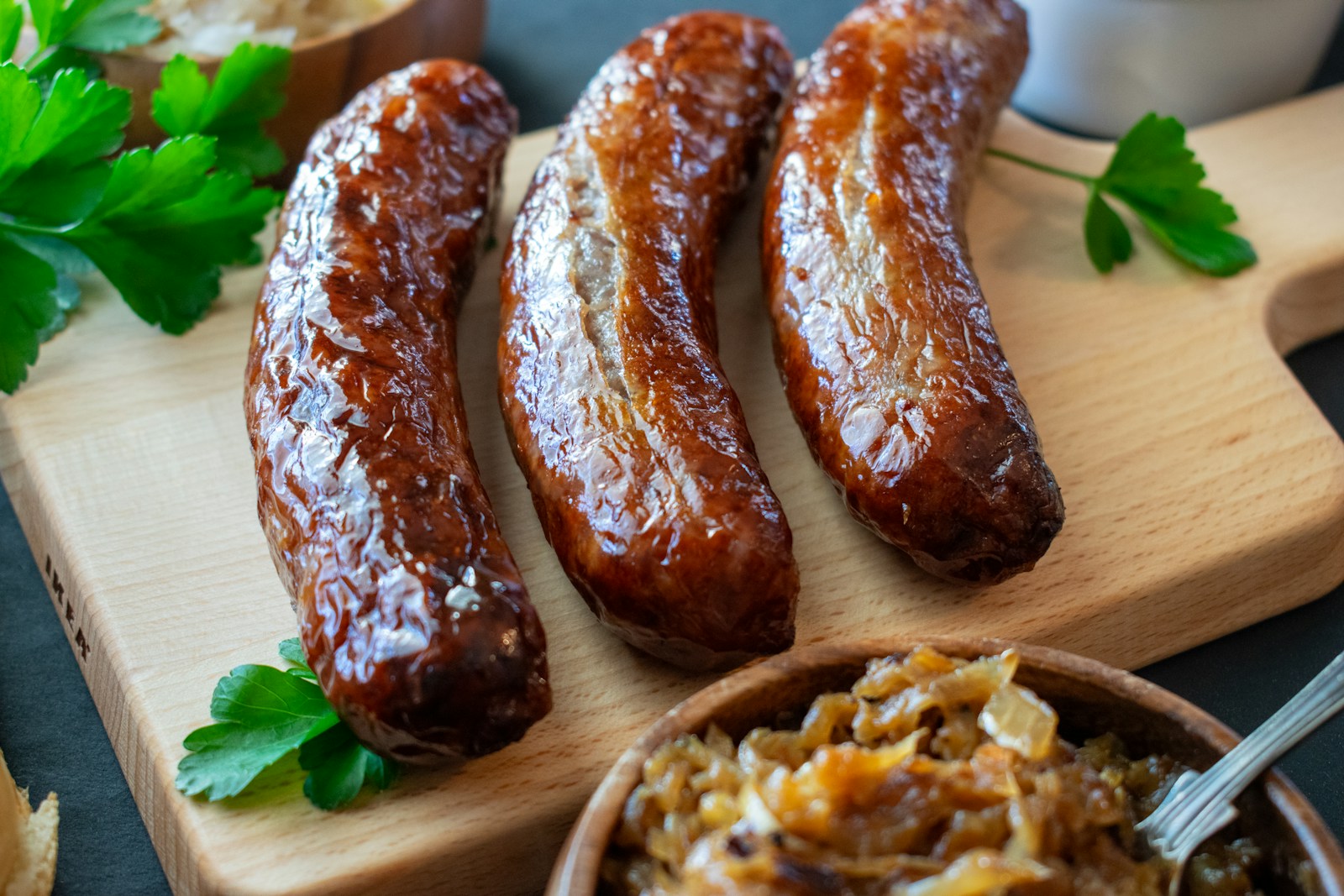
Caramelized onions are a versatile ingredient that can be used in a variety of recipes to add a rich, sweet, and savory flavor. Here are some creative ways to use caramelized onions in your cooking.
Appetizers and Starters
Caramelized onions can be used to add depth and complexity to appetizers and starters. Try using them in the following ways:
- Crostini: Spread a layer of creamy goat cheese on a slice of toasted baguette and top with a spoonful of caramelized onions. Sprinkle with chopped fresh herbs for added flavor.
- Tarts: Use caramelized onions as a topping for savory tarts. Try combining them with goat cheese and fresh thyme for a delicious flavor combination.
- Dips: Mix caramelized onions with sour cream and mayonnaise for a tasty dip that pairs well with chips or crudites.
Main Courses
Caramelized onions can also be used to add flavor to main courses. Here are some ideas:
- Pasta: Toss caramelized onions with your favorite pasta and a little bit of olive oil for a simple and delicious meal. Add some Parmesan cheese for extra flavor.
- Pizza: Use caramelized onions as a topping for homemade pizza. Combine them with other toppings like mushrooms, bacon, or roasted garlic for a tasty flavor combination.
- Burgers: Top your burgers with caramelized onions for a sweet and savory twist. Add some blue cheese and bacon for a decadent burger.
Condiments and Toppings
Caramelized onions can also be used as a condiment or topping to add flavor to a variety of dishes. Here are some ideas:
- Sandwiches: Add caramelized onions to your favorite sandwich for a sweet and savory twist. Try combining them with roasted turkey, Swiss cheese, and Dijon mustard for a delicious flavor combination.
- Salads: Use caramelized onions as a topping for salads. Try combining them with mixed greens, goat cheese, and toasted nuts for a tasty salad.
- Soups: Use caramelized onions as a topping for soups. Try combining them with croutons and a sprinkle of fresh herbs for added flavor.
Overall, caramelized onions are a versatile ingredient that can be used in a variety of ways to add flavor to your cooking. Try incorporating them into your favorite recipes for a delicious twist.
Troubleshooting Common Issues
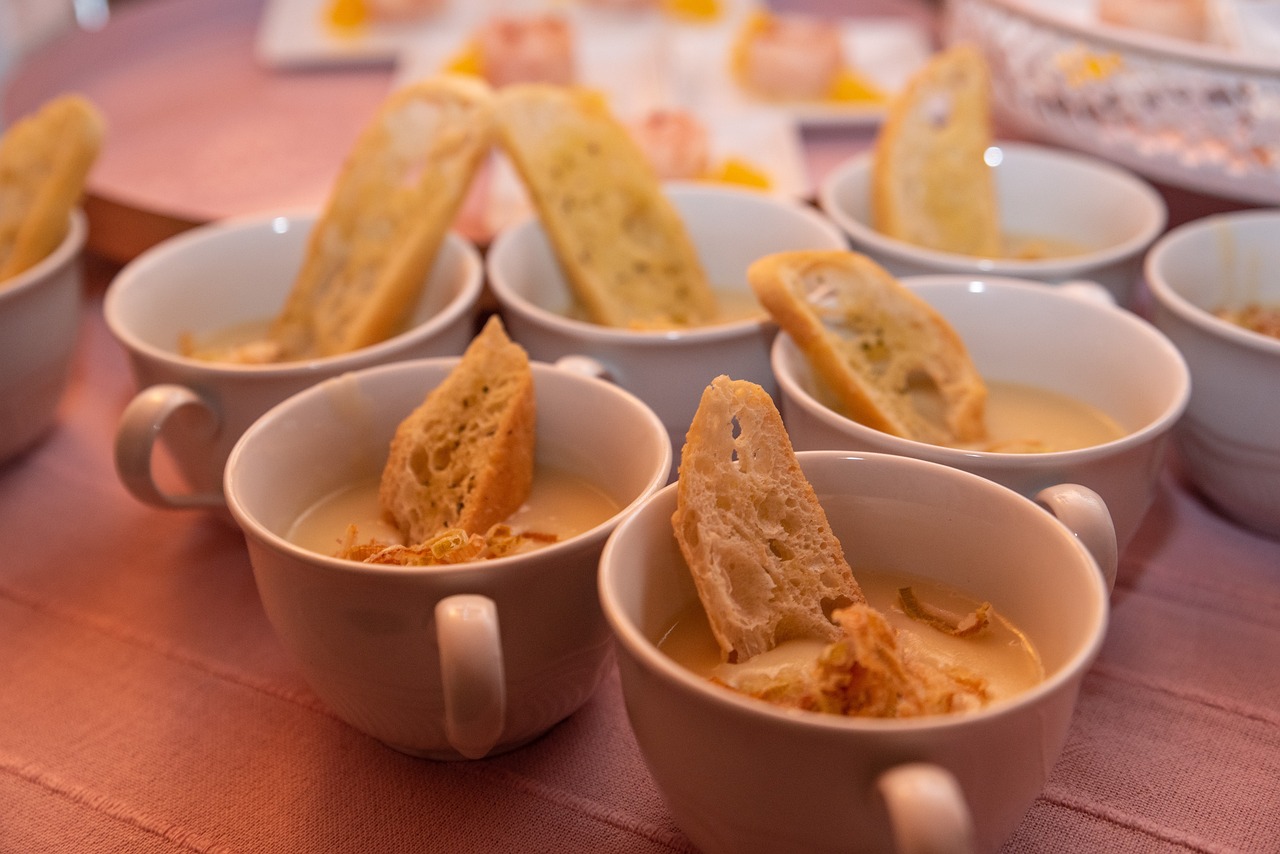
Caramelized onions are a delicious addition to any dish, but they can be tricky to get just right. Here are some common issues you may encounter when caramelizing onions and how to troubleshoot them.
Preventing Burning
One of the most common issues when caramelizing onions is burning. If your onions are burning, it’s likely because your heat is too high. You want to cook the onions low and slow to allow them to caramelize properly, so turn down the heat and be patient. You can also add a splash of water or broth to the pan if you notice the onions are starting to stick.
Another way to prevent burning is to stir the onions frequently. This will help distribute the heat evenly and prevent hot spots in the pan. You can also use a non-stick pan or add a bit of oil or butter to the pan to help prevent sticking.
Achieving Consistent Results
If you’re having trouble achieving consistent results when caramelizing onions, there are a few things you can do. First, make sure you’re slicing the onions evenly. If the pieces are different sizes, they will cook at different rates and you’ll end up with unevenly caramelized onions.
Another thing to keep in mind is that the onions will release a lot of moisture as they cook, so make sure you’re using a large enough pan. Overcrowding the pan can lead to steaming instead of caramelizing, so give the onions plenty of room to cook.
Finally, be patient. Caramelizing onions takes time, so don’t rush the process. It’s better to cook them low and slow to get that deep, rich flavor. With a little practice, you’ll be caramelizing onions like a pro in no time.
Caramelized Onions and Health
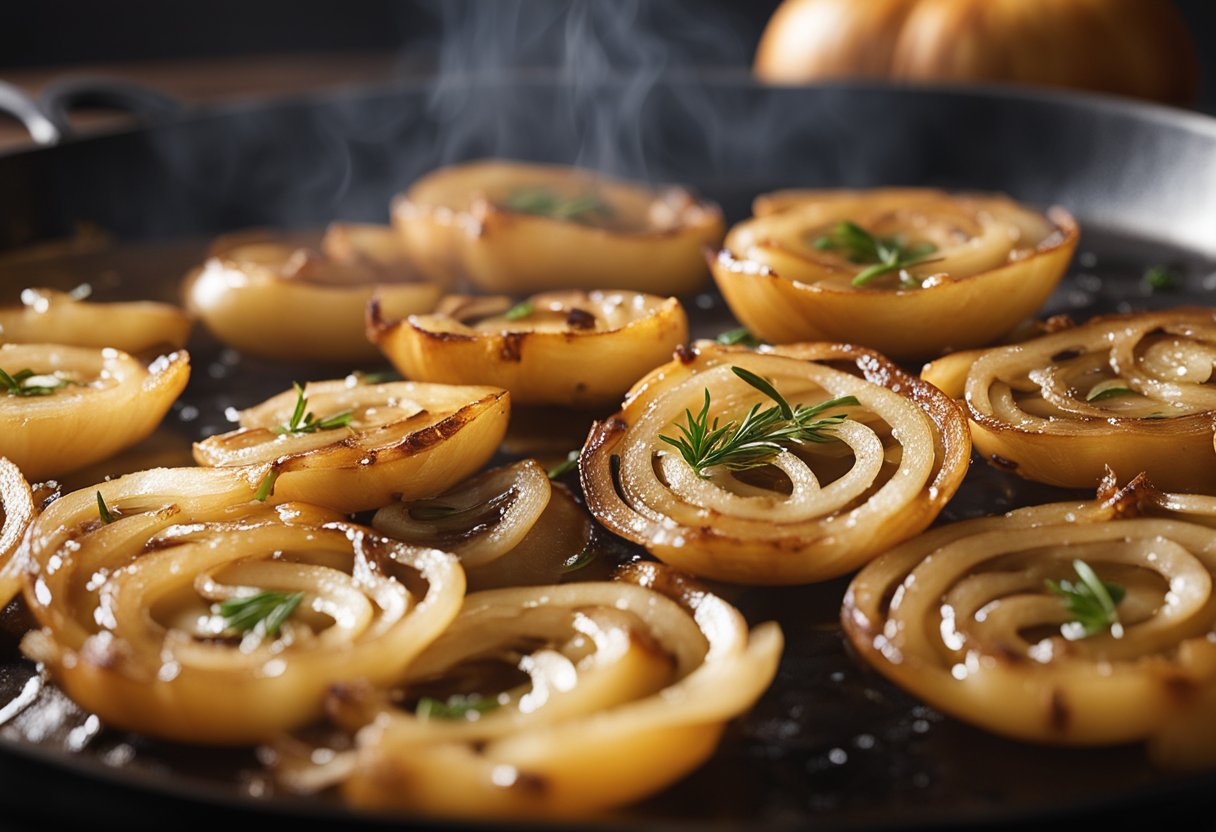
Caramelized onions are a popular ingredient in many dishes, and they can add a sweet and savory flavor to your meals. But are caramelized onions healthy for you? In this section, we’ll explore the health benefits of caramelized onions and whether they are good for you.
Nutritional Value of Caramelized Onions
Caramelized onions are a good source of vitamins and minerals, including vitamin C, vitamin B6, and potassium. They are also low in calories and high in fiber, making them a great addition to a healthy diet.
Here is the nutritional information for a half-cup of caramelized onions:
| Nutrient | Amount |
|---|---|
| Calories | 64 |
| Total Fat | 0.2g |
| Sodium | 6mg |
| Total Carbohydrates | 15g |
| Dietary Fiber | 1.9g |
| Sugars | 8.3g |
| Protein | 1.2g |
Health Benefits of Caramelized Onions
Caramelized onions contain antioxidants that can help protect your cells from damage caused by free radicals. They also have anti-inflammatory properties that can help reduce inflammation in your body.
Studies have shown that onions, in general, may have health benefits such as reducing the risk of certain types of cancer, improving heart health, and reducing the risk of stroke. However, more research is needed to determine if these benefits are specifically related to caramelized onions.
How to Make Caramelized Onions Healthier
While caramelized onions can be a healthy addition to your diet, they are often cooked in oil and can be high in calories and fat. To make caramelized onions healthier, you can use a non-stick pan and a small amount of oil or cooking spray. You can also use water or vegetable broth to help caramelize the onions without adding extra calories.
Overall, caramelized onions can be a healthy and flavorful addition to your meals. Just be mindful of how they are cooked and enjoy them in moderation as part of a balanced diet.
External Resources and Further Reading
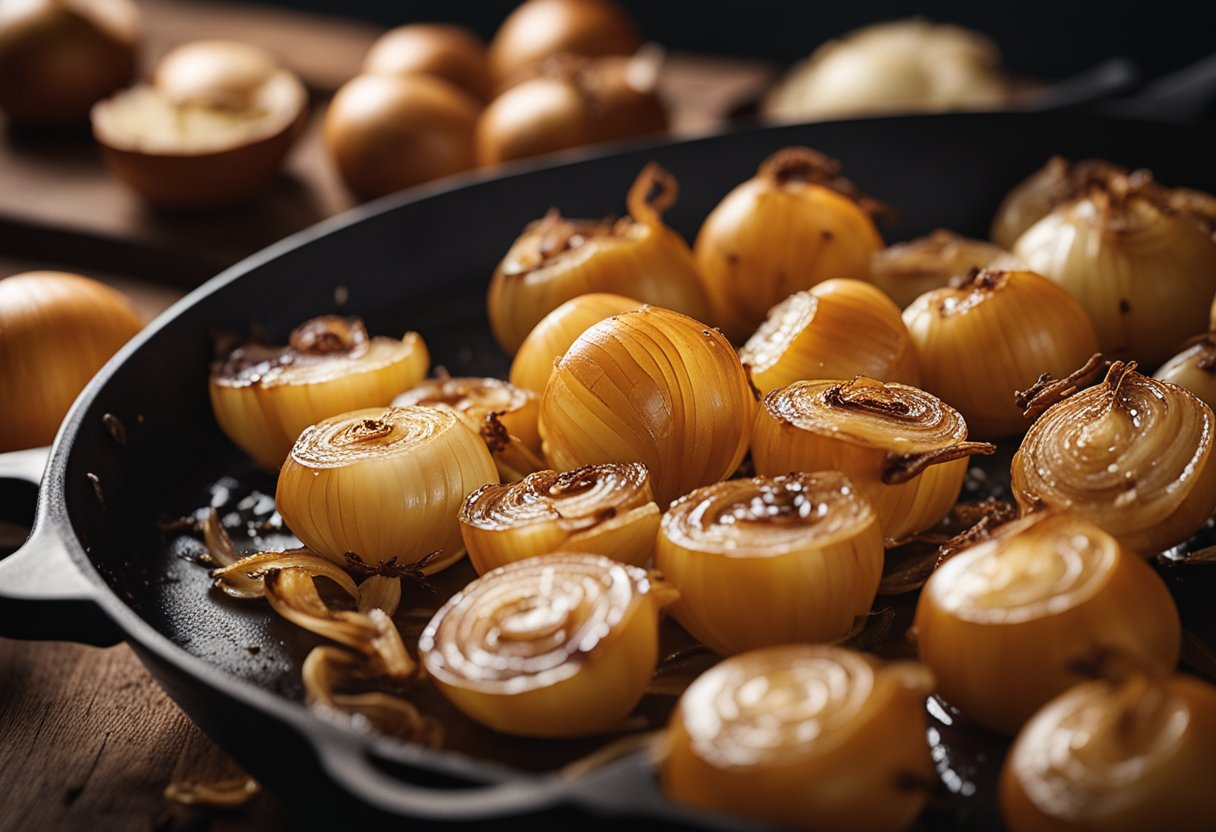
If you want to learn more about caramelized onions and how to cook them, there are plenty of resources available online. Here are some external links that you might find helpful:
- Once Upon a Chef: This website provides a step-by-step guide to caramelizing onions, along with helpful tips and tricks.
- Wholesome Yum: This website offers a foolproof method for caramelizing onions, which involves using broth to keep the onions hydrated and prevent them from burning.
- Love and Lemons: This website provides a recipe for caramelized onions that uses a cast iron skillet and takes around 50 to 80 minutes to cook.
- Serious Eats: This website offers a detailed guide to caramelizing onions, including information on the best type of onions to use and how to prevent burning.
These resources can help you learn more about the art of caramelizing onions and give you ideas for how to use them in your cooking. Whether you’re making French onion soup, adding them to a burger, or just enjoying them as a side dish, caramelized onions are a delicious and versatile ingredient that can add depth and flavor to a wide range of dishes.
In addition to these external resources, there are also many cookbooks and cooking websites that offer recipes and tips for cooking with caramelized onions. Some popular options include “The Joy of Cooking” by Irma S. Rombauer, Marion Rombauer Becker, and Ethan Becker, and “Barefoot Contessa at Home” by Ina Garten.
Frequently Asked Questions
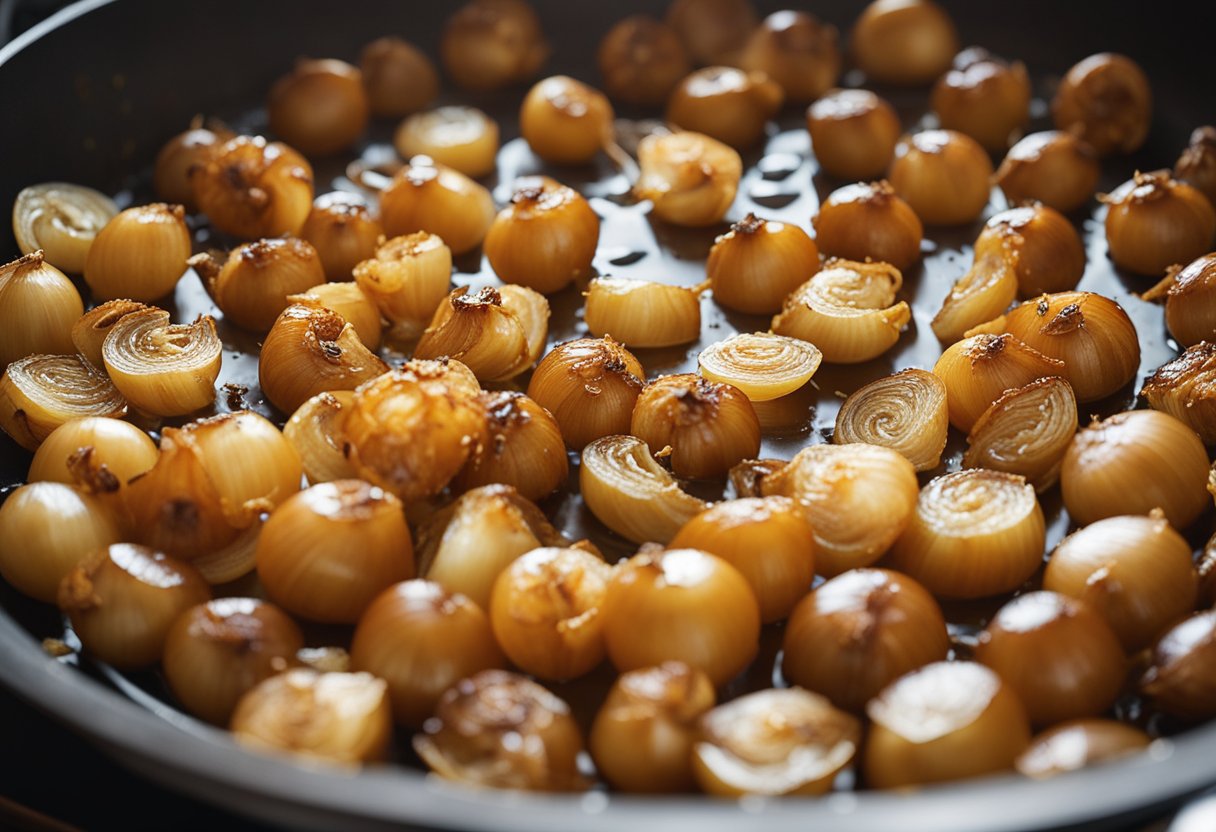
What is the best type of onion for making caramelized onions?
Yellow onions are the most commonly used onions for caramelizing due to their high sugar content and pungent flavor. However, you can also use red onions or sweet onions for a milder taste.
How long does it take to properly caramelize onions?
Caramelizing onions is a slow process that requires patience. It can take anywhere from 30 minutes to an hour to properly caramelize onions, depending on the quantity and heat level.
Can you caramelize onions without adding sugar?
Yes, you can caramelize onions without adding sugar. The natural sugars in the onions are enough to create the caramelization process. However, adding a pinch of salt can help draw out the moisture from the onions and speed up the caramelization process.
What’s the difference between caramelizing onions with butter versus oil?
Butter adds a rich, nutty flavor to caramelized onions, while oil has a neutral flavor. Butter also has a lower smoke point than oil, so it’s important to keep the heat low when using butter to prevent burning.
At what heat should you cook onions to achieve caramelization?
To achieve caramelization, cook onions over medium-low heat. High heat can cause the onions to burn, while low heat will cause them to sweat and release moisture without caramelizing.
Are there any tricks to prevent onions from burning during caramelization?
Stirring the onions frequently will help prevent them from burning. You can also add a splash of water or broth to the pan if the onions start to stick or dry out. Covering the pan while cooking can also help retain moisture and prevent burning.
External Links
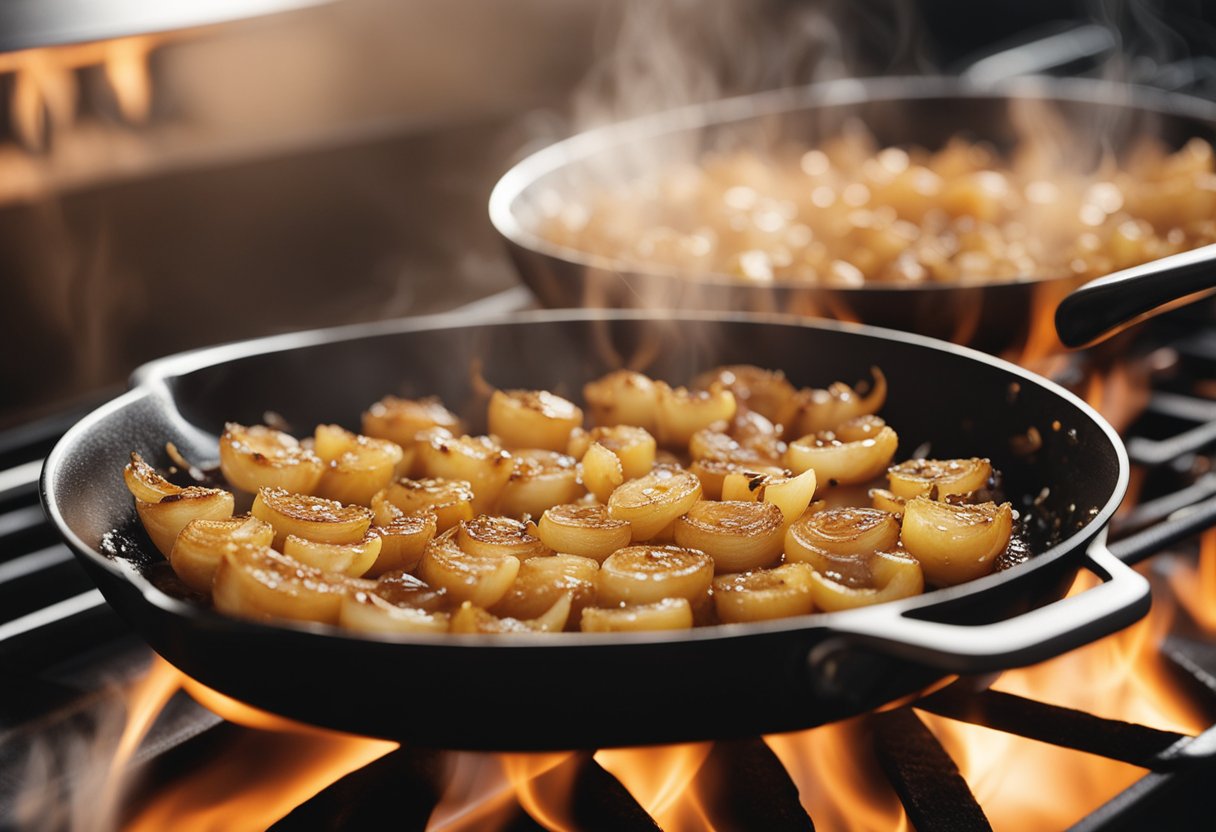
If you want to learn more about caramelized onions, you can check out the following external links:
- The Best Caramelized Onion Method by The Kitchn: This article compares six different methods of caramelizing onions and identifies the best one. The article includes step-by-step instructions, photos, and helpful tips.
- How to Caramelize Onions (BEST Caramelized Onions!) by The Speckled Palate: This article provides a simple and foolproof method for caramelizing onions, along with photos and tips for success.
- Caramelized Onions (Foolproof Method) by Wholesome Yum: This article provides a detailed recipe for caramelized onions, including ingredients, step-by-step instructions, photos, and tips.
- How to Caramelize Onions Recipe by Serious Eats: This article provides a detailed recipe for caramelized onions, along with helpful tips and photos.
These external links provide a wealth of information about caramelized onions, including different methods, recipes, and tips for success. Whether you’re a beginner or an experienced cook, you’re sure to find something useful in these resources.
More FAQs
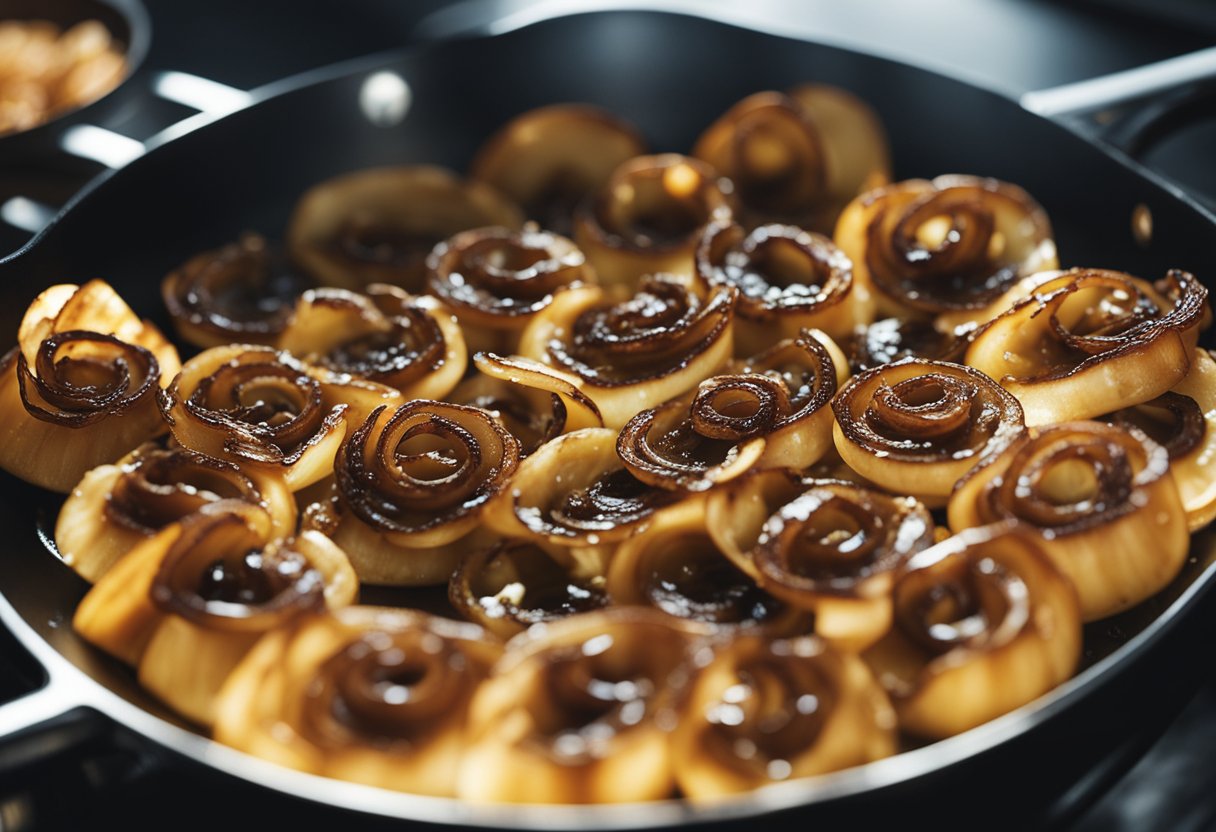
You may still have some questions about caramelized onions. Here are some more FAQs to help you out:
What are some tricks to caramelizing onions?
Caramelizing onions can be a bit tricky, but there are a few tricks that can make the process easier. One trick is to add a pinch of baking soda to the onions. The baking soda will help to break down the onions and speed up the caramelization process. Another trick is to add a splash of vinegar or lemon juice to the onions. The acid will help to break down the onions and add some extra flavor.
What goes well with caramelized onions?
Caramelized onions are a versatile ingredient that can be used in a variety of dishes. They go well with meats, such as steak or pork chops, and can be used to top burgers or sandwiches. They also pair well with vegetables, such as roasted carrots or Brussels sprouts. Caramelized onions can also be used in soups, stews, and casseroles to add some extra flavor.
Which onions caramelize best?
While all onions can be caramelized, some onions are better suited for the process than others. Sweet onions, such as Vidalia or Walla Walla onions, are a popular choice for caramelizing because of their high sugar content. Red onions can also be caramelized, but they will turn a brownish color instead of a deep golden color.
What makes onions caramelize faster?
There are a few factors that can make onions caramelize faster. One factor is the size of the onions. Thinly sliced onions will caramelize faster than thickly sliced onions. Another factor is the heat of the pan. A hotter pan will caramelize the onions faster than a cooler pan. Finally, adding a pinch of salt to the onions can help to draw out their moisture and speed up the caramelization process.
Conclusion
Congratulations, you now know everything you need to know about caramelized onions! You have learned about the different methods for caramelizing onions, including stovetop, oven, and slow cooker methods. You also know what happens when you caramelize an onion, and why it is such a popular cooking technique.
Remember, caramelized onions are a versatile ingredient that can be used in a variety of dishes, from soups and stews to sandwiches and pizzas. They add a depth of flavor and sweetness that can elevate any dish.
To recap, here are some key takeaways:
- Caramelizing onions takes time and patience, but it is worth it for the delicious flavor it imparts.
- The key to caramelizing onions is low and slow cooking, with plenty of stirring to prevent burning.
- You can use a variety of methods to caramelize onions, including stovetop, oven, and slow cooker methods.
- Caramelized onions are a versatile ingredient that can be used in a variety of dishes.
- When caramelizing onions, you can add a pinch of salt and sugar to help with the caramelization process.
Now that you know how to caramelize onions, it’s time to get cooking! Try adding caramelized onions to your favorite dishes and experiment with different methods to find your favorite. Happy cooking!
Print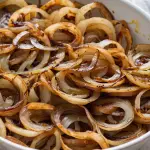
Flavourful Caramelized Onions Recipe
- Total Time: 40-50 minutes
- Yield: 8 servings 1x
- Diet: Vegetarian
Description
Caramelized Onions
Ingredients
- 4 large onions, thinly sliced
- 2 tablespoons unsalted butter
- 2 tablespoons olive oil
- 1/2 teaspoon salt
- 1 teaspoon granulated sugar
- 1/4 cup balsamic vinegar (optional, for added flavor)
Instructions
- In a large skillet or pan, heat the butter and olive oil over medium-low heat.
- Add the thinly sliced onions to the pan, ensuring they are evenly spread.
- Sprinkle salt and sugar over the onions. Stir to coat the onions in the butter and oil.
- Cook the onions over medium-low heat, stirring occasionally, for 30-40 minutes or until they become soft, golden brown, and caramelized.
- If using balsamic vinegar, pour it over the onions during the last 5 minutes of cooking. Stir well to combine.
- Once caramelized to your liking, remove the onions from the heat.
- Serve the caramelized onions as a topping for burgers, sandwiches, pizzas, or as a flavorful side dish.
Notes
Caramelized onions add a rich, sweet flavor to a variety of dishes. Experiment with different types of onions for unique tastes. Store any leftovers in the refrigerator for up to a week; they can also be frozen for longer storage. These onions make an excellent addition to salads, sandwiches, or as a tasty topping for grilled meats.
- Prep Time: 10 minutes
- Cook Time: 30-40 minutes
- Category: Side Dish
- Method: Stovetop
- Cuisine: Various
Nutrition
- Serving Size: 1/4 cup
- Calories: 80
- Sugar: 4g
- Sodium: 150mg
- Fat: 6g
- Carbohydrates: 6g
- Fiber: 1g
- Protein: 1g
- Cholesterol: 10mg
Keywords: Caramelized Onions
